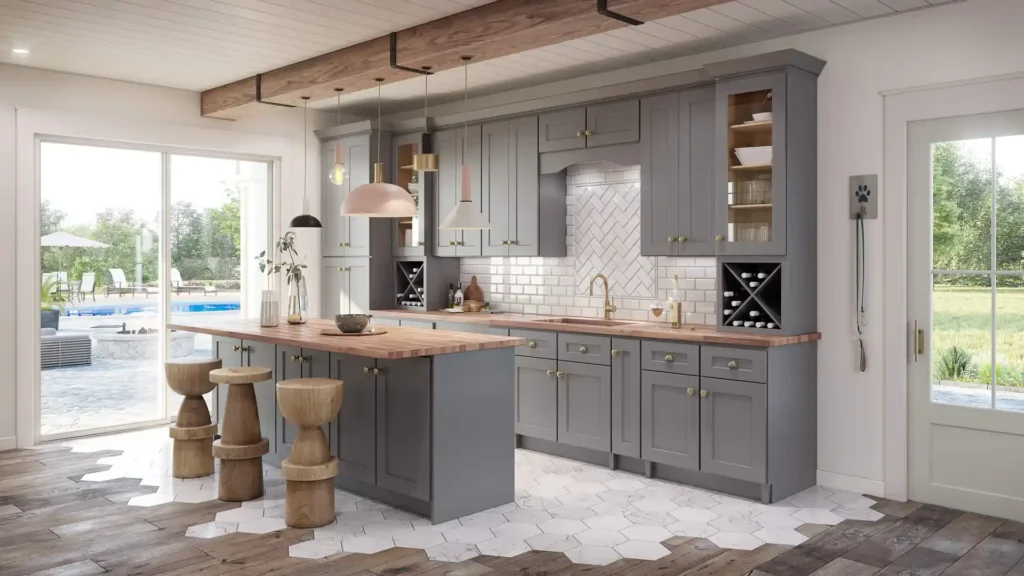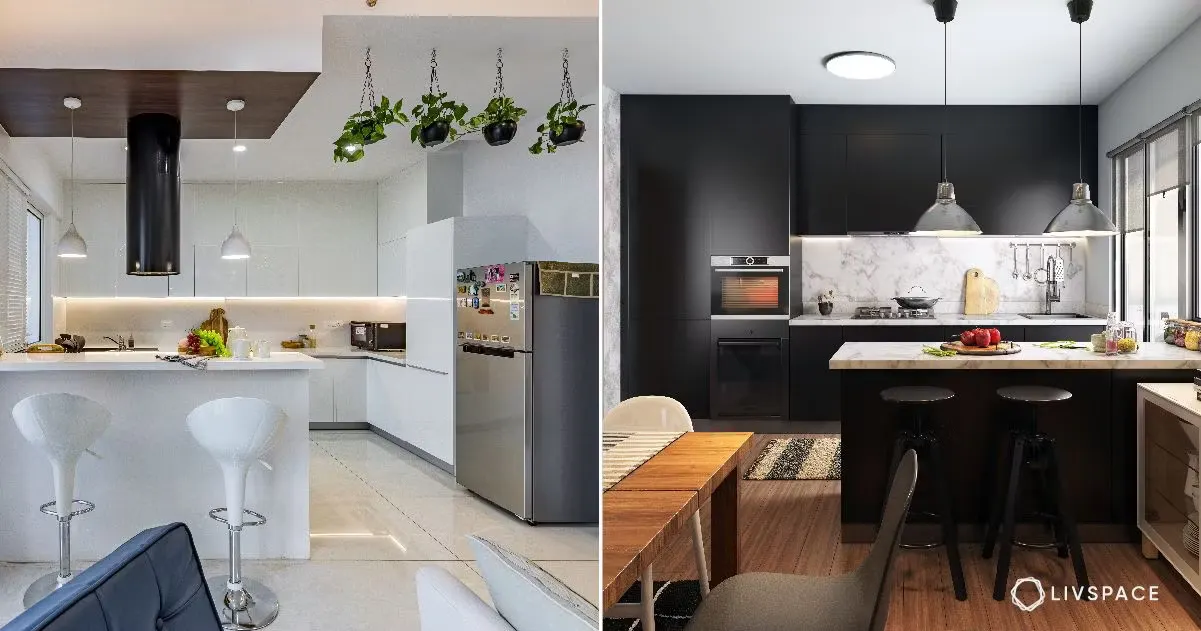The kitchen is often considered the heart of the home. It’s where we gather with family and friends, share meals, and create lasting memories. Because of its central role in our lives, the aesthetics of your kitchen matter. A beautifully decorated kitchen can enhance your cooking experience and make your home feel more inviting.
If you’ve ever wondered, “how can I decorate my kitchen?”, you’re not alone. Many homeowners seek ways to refresh their kitchen spaces, whether through a complete renovation or simple decorative touches.
Explore practical tips and creative ideas to help you transform your kitchen into a space that reflects your personality and meets your functional needs.
Understanding Your Kitchen Style

Assessing Your Current Kitchen Design
Before embarking on any decorating journey, it’s essential to evaluate your current kitchen design. Take a moment to look around and assess the existing color schemes, layouts, and overall functionality.
- Color Schemes: Are the colors warm and inviting, or do they feel cold and unwelcoming?
- Layout: Does the layout facilitate easy movement and cooking, or does it feel cramped and cluttered?
Understanding these elements will help you identify what works and what doesn’t. Remember, functionality is just as important as aesthetics. A beautiful kitchen that is difficult to navigate will not serve you well in the long run.
Identifying Your Preferred Style
Next, it’s time to identify your preferred kitchen style. There are numerous styles to choose from, each with its unique charm. Here are a few popular options:
- Modern: Characterized by sleek lines, minimalistic designs, and a focus on functionality.
- Rustic: Emphasizes natural materials, warm colors, and a cozy, inviting atmosphere.
- Farmhouse: Combines rustic charm with modern conveniences, often featuring white cabinetry and vintage accents.
To choose a style that reflects your personal taste, consider the following tips:
- Look for Inspiration: Browse through home decor magazines, Pinterest boards, or Instagram accounts dedicated to interior design.
- Create a Mood Board: Collect images, colors, and materials that resonate with you. This visual representation can help clarify your vision.
Color Schemes and Paint

Choosing the Right Colors
Color plays a crucial role in setting the mood of your kitchen. Different colors can evoke various emotions and feelings. For instance:
- Warm Colors (reds, oranges, yellows): These colors can create a cozy and inviting atmosphere, perfect for family gatherings.
- Cool Colors (blues, greens): These colors tend to be calming and can make a space feel more spacious.
When selecting a color scheme, consider popular combinations that work well in kitchens, such as:
- White and Gray: A timeless combination that offers a clean and modern look.
- Navy Blue and Gold: Adds a touch of elegance and sophistication.
Painting Techniques
Once you’ve chosen your colors, it’s time to think about painting techniques. Here are some tips for painting kitchen cabinets and walls:
- Preparation is Key: Clean surfaces thoroughly and use painter’s tape to protect areas you don’t want to paint.
- Use Quality Paint: Invest in high-quality paint that can withstand the wear and tear of a kitchen environment.
Consider adding accent walls or creative finishes, such as:
- Chalkboard Paint: Perfect for jotting down recipes or grocery lists.
- Ombre Effects: A trendy way to blend colors seamlessly.
Decorative Elements

Adding Artwork and Wall Decor
Artwork can significantly enhance the aesthetic appeal of your kitchen. Consider incorporating kitchen-themed art such as:
- Vintage food posters
- Framed recipes or cookbooks
Creating a gallery wall can also add personality to your space. Mix and match different frame styles and sizes for an eclectic look.
Utilizing Textiles
Textiles are another way to add warmth and texture to your kitchen. Here are some ideas:
- Curtains: Choose light, airy fabrics to let in natural light while maintaining privacy.
- Tablecloths and Rugs: Opt for patterns and materials that complement your kitchen style. For example, a rustic kitchen might benefit from a plaid tablecloth.
Incorporating Plants
Plants can breathe life into your kitchen. They not only enhance aesthetics but also improve air quality. Consider these options:
- Herbs: Basil, rosemary, and mint are great choices that can be used in cooking.
- Succulents: Low-maintenance and stylish, they can thrive in various lighting conditions.
Display plants in decorative pots on windowsills or shelves for a fresh touch.
Furniture and Layout

Choosing Functional Furniture
When selecting furniture for your kitchen, prioritize functionality. Here are some tips:
- Dining Table and Chairs: Choose a table that fits your space and can accommodate your family and guests comfortably.
- Multi-functional Furniture: In small kitchens, consider options like a kitchen island with storage or a foldable dining table.
Optimizing Layout for Aesthetic Appeal
The layout of your kitchen can greatly affect its aesthetic appeal. Here are some tips for arranging furniture:
- Create Flow: Ensure there’s enough space to move around comfortably. Avoid overcrowding the area with too much furniture.
- Cozy Seating Areas: If space allows, create a small nook with comfortable seating for casual meals or coffee breaks.
Lighting Solutions
Types of Kitchen Lighting
Lighting is essential in any kitchen. It not only serves a functional purpose but also enhances the overall ambiance. Here are the three main types of kitchen lighting:
- Ambient Lighting: Provides overall illumination. Consider ceiling fixtures or recessed lighting.
- Task Lighting: Focused lighting for specific tasks, such as under-cabinet lights for food preparation areas.
- Accent Lighting: Highlights specific features, like artwork or architectural details.
Decorative Lighting Fixtures
Incorporating stylish lighting fixtures can elevate your kitchen’s decor. Here are some suggestions:
- Pendant Lights: Perfect for over kitchen islands or dining tables, they come in various styles to match your theme.
- Chandeliers: A bold statement piece that can add elegance to your kitchen.
Don’t forget to consider under-cabinet lighting for added functionality and ambiance.
Accessories and Finishing Touches

Selecting Kitchen Accessories
Accessories can tie your kitchen decor together. When choosing accessories, consider items that are both decorative and functional, such as:
- Stylish Utensils: Opt for utensils that match your color scheme.
- Decorative Containers: Use jars or baskets to store items while adding visual interest.
Seasonal Decor Ideas
Refreshing your kitchen decor with the seasons can keep the space feeling new. Here are some ideas:
- Spring/Summer: Incorporate bright colors and floral arrangements.
- Fall/Winter: Use warm tones and cozy textiles, like knitted dishcloths or seasonal centerpieces.
Conclusion
In conclusion, making your kitchen prettier involves a blend of thoughtful design choices and personal touches. From assessing your current style to selecting the right colors, furniture, and accessories, each element plays a vital role in creating a space that is both functional and aesthetically pleasing.
Don’t hesitate to experiment with different ideas and let your personality shine through your kitchen decor. Whether you choose to go bold with colors or keep it simple with elegant accessories, the key is to create a space that feels like home.




